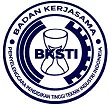Business model canvas of auto detailing and car wash home service
Abstract
Keywords
Full Text:
PDFReferences
C. Baden-Fuller and M. S. Morgan, “Business Models as Models,” Long range planning, vol. 43, no. 2–3, pp. 156–171, Apr. 2010, doi: 10.1016/j.lrp.2010.02.005.
S. Hong, Konstantinos Serfes, and V. Thiele, “Competition in the venture capital market and the success of startup companies: Theory and evidence,” Journal of Economics & Management Strategy, vol. 29, no. 4, pp. 741–791, Jul. 2020, doi: 10.1111/jems.12394.
D. B. Audretsch, George van Leeuwen, B. Menkveld, and R. Thurik, “Market dynamics in the Netherlands: Competition policy and the role of small firms,” International journal of industrial organization, vol. 19, no. 5, pp. 795–821, Apr. 2001, doi: 10.1016/s0167-7187(00)00094-1.
J. Brandau and A. Young, “Competitive intelligence in entrepreneurial and start-up businesses,” Competitive intelligence review, vol. 11, no. 1, pp. 74–84, Jan. 2000, doi: 10.1002/(sici)1520-6386(200031)11:1%3C74::aid-cir10%3E3.0.co;2-x.
K. Ganesaraman, “Why Do Startups Fail? A Case Study Based Empirical Analysis in Bangalore,” vol. 7, no. 1, pp. 79–102, Apr. 2018, doi: 10.7545/ajip.2018.7.1.079.
M. Aminova and E. Marchi, “The Role of Innovation on Start-Up Failure vs. its Success,” The international journal of business ethics and governance, pp. 41–72, Jan. 2021, doi: 10.51325/ijbeg.v4i1.60.
A. Osterwalder and Y. Pigneur. Business Model Canvas. (T. Clark, Ed.). New Jersey: John wiley & sons, inc, 2010.
A. Daou, C. Mallat, G. Chammas, N. Cerantola, S. Kayed, and Najat Aoun Saliba, “The Ecocanvas as a business model canvas for a circular economy,” Journal of cleaner production, vol. 258, pp. 120938–120938, Jun. 2020, doi: 10.1016/j.jclepro.2020.120938.
Z. Dobrowolski and Łukasz Sułkowski, “Business Model Canvas and Energy Enterprises,” Energies, vol. 14, no. 21, pp. 7198–7198, Nov. 2021, doi: 10.3390/en14217198.
T. D. Moshood et al., “Lean business model canvas and sustainable innovation business model based on the industrial synergy of microalgae cultivation,” Environmental challenges, vol. 6, pp. 100418–100418, Jan. 2022, doi: 10.1016/j.envc.2021.100418.
Sekaran and Bougie. Research methods for business: a skill-building approach – 6th ed. West Sussex, UK: John Wiley & Sons Ltd, 2013.
Z. Zhu, J. Zhao, and A. A. Bush, “The effects of e-business processes in supply chain operations: Process component and value creation mechanisms,” International journal of information management, vol. 50, pp. 273–285, Feb. 2020, doi: 10.1016/j.ijinfomgt.2019.07.001.
M. Teresa Ballestar, P. Grau-Carles, and J. Sainz, “Customer segmentation in e-commerce: Applications to the cashback business model,” Journal of business research, vol. 88, pp. 407–414, Jul. 2018, doi: 10.1016/j.jbusres.2017.11.047.
A. Payne, P. Frow, L. Steinhoff, and A. Eggert, “Toward a comprehensive framework of value proposition development: From strategy to implementation,” Industrial marketing management, vol. 87, pp. 244–255, May 2020, doi: 10.1016/j.indmarman.2020.02.015.
Tammo H.A. Bijmolt et al., “Challenges at the marketing–operations interface in omni-channel retail environments,” Journal of business research, vol. 122, pp. 864–874, Jan. 2021, doi: 10.1016/j.jbusres.2019.11.034.
C. Metallo, R. Agrifoglio, F. Schiavone, and J. Mueller, “Understanding business model in the Internet of Things industry,” Technological forecasting & social change/Technological forecasting and social change, vol. 136, pp. 298–306, Nov. 2018, doi: 10.1016/j.techfore.2018.01.020.
T. Ernayanti, “Application of SWOT Analysis in Strategies for Increasing the Competitiveness of Muslim Traders to Face the Asean Economic Community (AEC),” Journal of Social Knowledge Education, vol. 4, no. 2, pp. 43–47, May 2023, doi: 10.37251/jske.v4i2.427.
F. Indra, Verenia Novelia Christabel, A. Vania, and J. Juliana, “SWOT analysis business feasibility study (Case Study: Italian Restaurant),” International Journal of Social, Policy and Law, vol. 3, no. 2, pp. 30–40, 2022, doi: 10.8888/ijospl.v3i2.102.
M. Santa and A. Caldeira-Pires, “Environmental product declaration promotion in Brazil: SWOT analysis and strategies,” Journal of cleaner production, vol. 235, pp. 1061–1072, Oct. 2019, doi: 10.1016/j.jclepro.2019.06.266.
K. Li, “SWOT analysis of e‐commerce development of rural tourism farmers’ professional cooperatives in the era of big data,” IET communications, vol. 16, no. 5, pp. 592–603, Feb. 2022, doi: 10.1049/cmu2.12358.
M. E. Porter. The Competitive Advantage: Creating and Sustaining Superior Performance. NY: Free Press, 1985.
G. Masiero, Mario Henrique Ogasavara, Ailton Conde Jussani, and Marcelo Luiz Risso, “The global value chain of electric vehicles: A review of the Japanese, South Korean and Brazilian cases,” Renewable & sustainable energy reviews, vol. 80, pp. 290–296, Dec. 2017, doi: 10.1016/j.rser.2017.05.148.
C. F. Dunant, M. P. Drewniok, M. Sansom, S. Corbey, J. M. Cullen, and J. M. Allwood, “Options to make steel reuse profitable: An analysis of cost and risk distribution across the UK construction value chain,” Journal of cleaner production, vol. 183, pp. 102–111, May 2018, doi: 10.1016/j.jclepro.2018.02.141.
DOI: http://dx.doi.org/10.62870/jiss.v10i1.24440
Refbacks
- There are currently no refbacks.
 is supported by
is supported by








